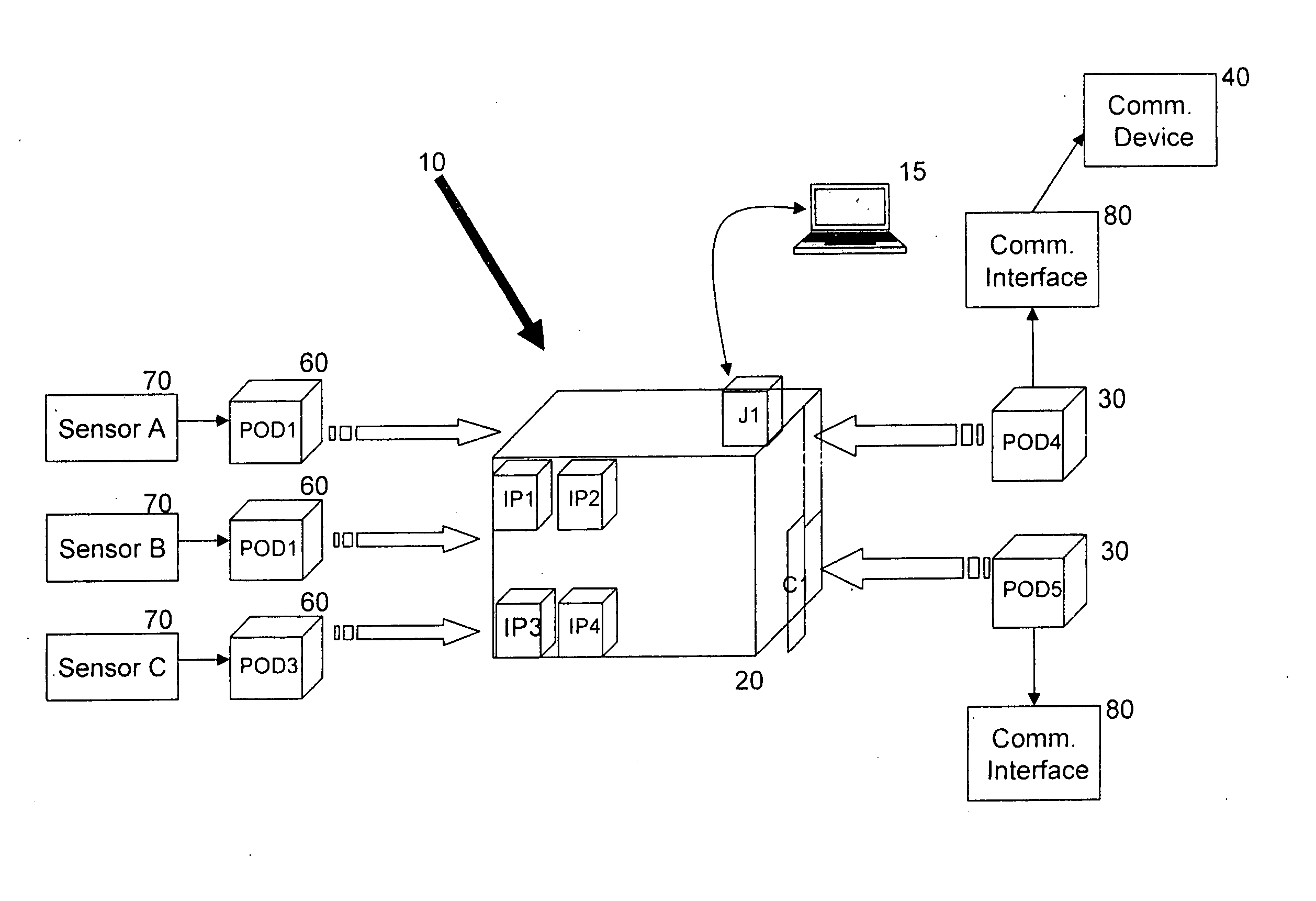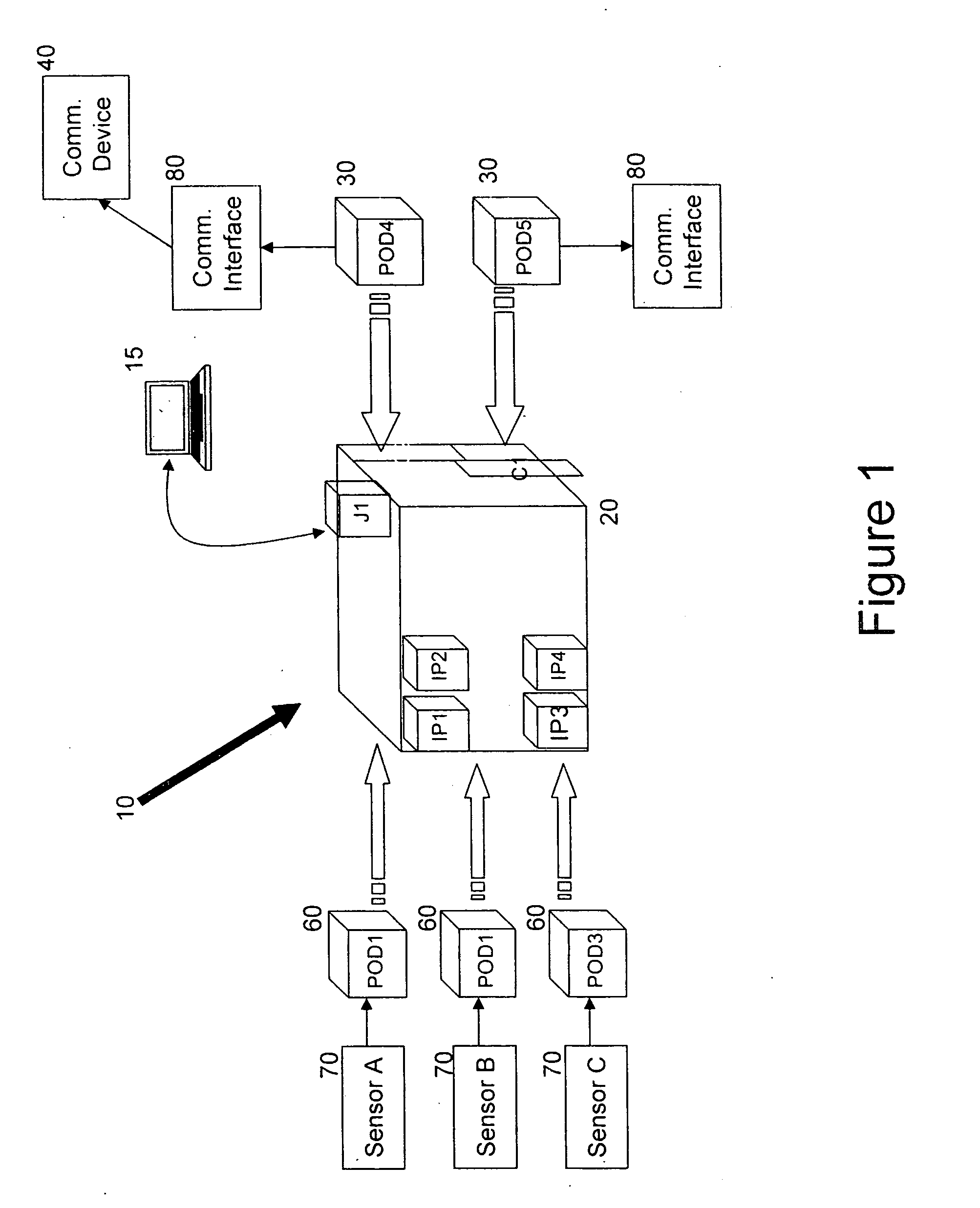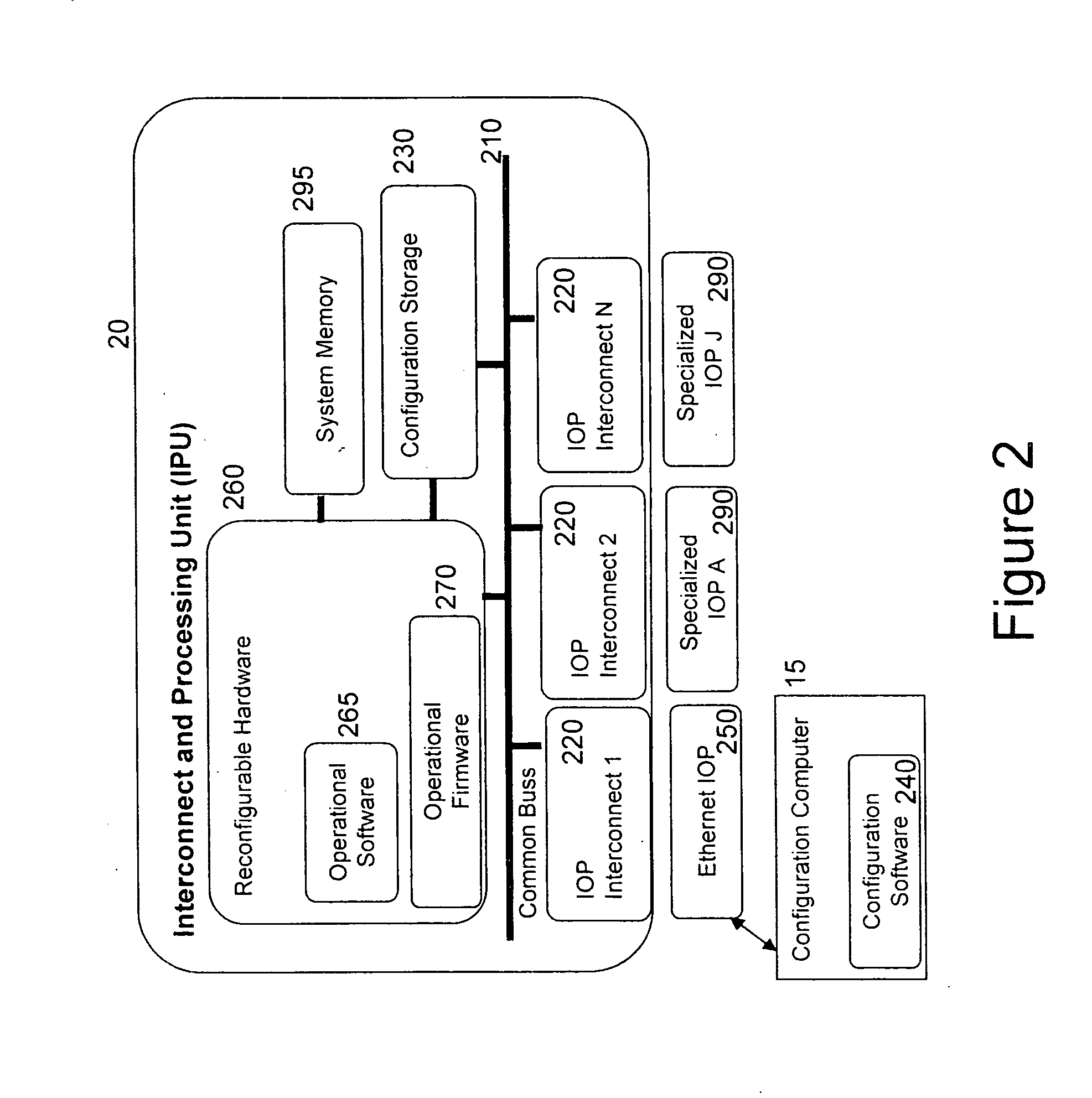Remote sensor with modular bus adapter
a modular bus and sensor technology, applied in the field of remote sensing with modular bus adapters, can solve the problems of inability to offer the sensing capability the inability to monitor the remote monitoring application of these sensors, and the inability to meet the data collection tasks of many parameters of interest, etc., to achieve the maximum flexibility in network connectivity and topology capabilities, the effect of maximizing system control flexibility and architectural flexibility
- Summary
- Abstract
- Description
- Claims
- Application Information
AI Technical Summary
Benefits of technology
Problems solved by technology
Method used
Image
Examples
Embodiment Construction
[0034] The present invention for a remote sensing system and methodology is now described generally with additional details following the general description now provided.
[0035] The present invention comprises a remote sensing system which includes an Interconnect and Processing Unit (IPU) which functions as an interface between sensors and communications components. The present invention further comprises a process for sensing according to the teachings herein. In the description that follows, numerous specific details are set forth for the purposes of explanation. It will, however, be understood by one of skill in the art that the invention is not limited thereto and that the invention can be practiced without such specific details and / or substitutes therefor. The present invention is limited only by the appended claims and may include various other embodiments which are not particularly described herein but which remain within the scope and spirit of the present invention.
[0036...
PUM
 Login to View More
Login to View More Abstract
Description
Claims
Application Information
 Login to View More
Login to View More - R&D
- Intellectual Property
- Life Sciences
- Materials
- Tech Scout
- Unparalleled Data Quality
- Higher Quality Content
- 60% Fewer Hallucinations
Browse by: Latest US Patents, China's latest patents, Technical Efficacy Thesaurus, Application Domain, Technology Topic, Popular Technical Reports.
© 2025 PatSnap. All rights reserved.Legal|Privacy policy|Modern Slavery Act Transparency Statement|Sitemap|About US| Contact US: help@patsnap.com



